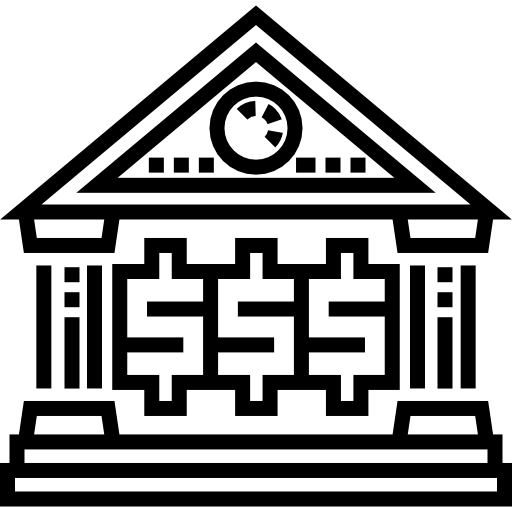ALLIED GOLD ANNOUNCES POSITIVE EXPLORATION RESULTS AT KURMUK’S TSENGE GOLD PROSPECT AND NEW
[ad_1]
ALLIED GOLD ANNOUNCES POSITIVE EXPLORATION RESULTS AT KURMUK’S TSENGE GOLD PROSPECT AND NEW OXIDE DISCOVERIES AT SADIOLA, SUPPORTING THE COMPANY’S OBJECTIVES TO EXTEND MINE LIFE AND INCREASE PRODUCTION
TORONTO, April 10, 2024 /PRNewswire/ – Allied Gold Corporation (TSX: AAUC) (“Allied” or the “Company”) is pleased to announce positive exploration results from the Tsenge gold prospect, the most advanced of several high quality exploration targets at the Kurmuk Project (refer to Figure 1). These results are part of a program that is expected to significantly increase the Mineral Resources and Mineral Reserves at Kurmuk, aligning with the Company’s goal of achieving a minimum of five million ounces of gold in mineral inventories at the project. Tsenge is strategically located along strike from the Ashashire deposit, which is planned as one of the initial two open pits for development at the project alongside the Dish Mountain deposit. Together, these initial planned pits contain 2.74 million ounces of gold in Proven and Probable Mineral Reserves and Kurmuk currently contains a total of 3.12 million ounces of gold in Measured and Indicated Resources and an additional 0.3 million ounces of gold in Inferred Resources. Significant increases to these figures are expected through further exploration at Tsenge and other near mine targets. The Kurmuk Project, currently in development and expected to enter production in the second quarter of 2026, is anticipated to have its mine life significantly extended by these multiple exploration targets, and in particular by the Tsenge gold prospect.
Figure 2 – Sekekoto West, Sadiola, Mali (CNW Group/Allied Gold Corporation)
Figure 3 – Sekekoto West diagram (CNW Group/Allied Gold Corporation)
Figure 4 – Tsenge Drilling targets (CNW Group/Allied Gold Corporation)
Figure 5 – Tsenge Ridge, Kurmuk, Ethiopia (CNW Group/Allied Gold Corporation)
Figure 6 – Tsenge Ridge Section 2080, Kurmuk, Ethiopia (CNW Group/Allied Gold Corporation)
Figure 7 – Tsenge Ridge Section 3160, Kurmuk, Ethiopia (CNW Group/Allied Gold Corporation)
Figure 8 – Tsenge Ridge Section 3360, Kurmuk, Ethiopia (CNW Group/Allied Gold Corporation)
Additionally, the Company is pleased to report positive exploration results at Sekekoto West (see Figures 2 and 3), which is one of the new significant targets at Sadiola and where ongoing exploration activities continue to successfully uncover additional near-surface oxide gold mineralisation. These findings are set to enhance production at existing operations and supplement future ore feed to Sadiola.
These achievements highlight Allied’s commitment to creating value through focused exploration, supported by this year’s budget of $32 million. The aim of this investment is to extend mine life, improve production and margins, as the Company focuses on enhancing efficiencies and profitability through the development of the Kurmuk Project, the Sadiola Expansion and the optimization initiatives at its producing assets.
Exploration Highlights:
Kurmuk Project, Tsenge Prospect:
Extended Mineralisation at Tsenge Ridge: Ongoing exploration has revealed significant gold mineralisation along a 9-kilometer strike length (see Figure 4), validated through soil sampling, geological mapping, and scout drilling. The Tsenge area (see Figure 5), one of four prioritized areas for Mineral Resource expansion, continues to demonstrate prolific geological potential.
High Economic Potential: Initial drill results and channel sampling have indicated economic thicknesses and grades of gold mineralisation in hard rock both at the surface and at least up to 200 meters vertically below the outcrops.
Confirming High-Grade Sources: These findings verify that the gold-in-soil anomalies originate from significant gold grades exceeding 1.0 g/t Au in rock samples, aligning with the successful exploration outcomes at Dish Mountain and Ashashire—the two initial open pits that encompass all current Mineral Reserves. Exploration of high-priority targets has yielded exceptional results to date, including a 24-meter intercept with a grade of over 3 g/t Au near the surface in channel sample TSCH002.
Enhancement of Mineral Resource Base: These results mark a critical step toward defining a considerable orebody at Tsenge, supporting Allied Gold’s strategy to significantly extend and improve Kurmuk’s production profile and augment Mineral Resources. Allied is currently progressing the construction activities for the Project, anticipating commencement of production in mid-2026 after completing the planned $500 million capital investment. The current mineral inventory supports a production rate that in the first years is expected to exceed 290,000 ounces per year with a reserves-only mine life of approximately 10 years, which is now expected to be extended as the Tsenge gold prospect and other exploration projects continue to advance.
Long-Term Production Outlook: These exploration successes underpin the Company’s strategy to enhance Kurmuk’s existing Mineral Reserves and Mineral Resources to support a strategic mine life of over 18 years, with annual gold production exceeding 250,000 ounces at an AISC(1) below $950/oz.
Robust Oxide Discovery at Sekekoto West in Support of Sadiola:
Established Resource Base: Since acquiring the Sadiola Project in 2021, Allied has identified over 15 million tonnes of economic oxide mineralisation within the near-mine footprint, significantly bolstering the oxide resource base essential for the existing and planned processing infrastructure.
Continuous Exploration Efforts: Ongoing exploration activities, including at Diba, Sekekoto West, FE4, and Tambali South, are critical parts of Allied’s strategy to leverage the existing resources and infrastructure to maximize production and cashflows in the short term.
New Near-Mine Oxide Discovery at Sekekoto West: Drilling at Sekekoto West has uncovered a new oxide deposit, set to contribute additional feed to the Sadiola plant. This deposit, located 2 km south of the Sadiola Processing Plant, underscores the ongoing potential for resource expansion within the mining license and covers a zone that has been historically underexplored, presenting significant new opportunities for resource growth over approximately 2 km of strike. Recent drilling has extended the known mineralisation by an additional 100m to the north, with plans to test further northward extensions by another 300m in Q2, aiming to uncover potential linkages and oxide mineralisation towards the FE3S rock storage facilities.
Strategic Corridor between Sekekoto and S12: The discovered corridor linking Sekekoto to the high-grade S12 prospect represents a promising target for further oxide ore discoveries. This corridor holds the potential to continue adding incremental higher-grade, lower-cost oxide ore feed to the Sadiola mill, ensuring enhanced throughput and efficiency, especially during Sadiola’s expansion. Allied’s current exploration model indicates the potential for uncovering significant mineralisation between these two areas and in other prospective areas across the Sadiola land package. This model is actively being tested, and could substantially increase oxide gold ounces available for extraction. Exploration results to date continue to corroborate the Company’s exploration model for Sadiola.
Integrated Phased Expansion with Recovery Enhancement Strategy: Increasing the oxide mineral inventory allows Sadiola to continue producing at elevated levels while incurring lower near-term capital costs as it pursues an integrated expansion of its existing processing infrastructure. With the addition of Diba and other oxide ore sources, Allied expects to support production levels between 200,000 and 230,000 ounces per year over the next two years at an attractive AISC(1), resulting in robust cash flows as it completes the implementation the Phase 1 expansion by early 2026. Further additional oxide discoveries could enhance the production profile of the Phase 1 expansion through 2028 meaningfully impacting its cash flow and returns. Furthermore, the Phase 2 Expansion, which is planned as a new processing plant to be built starting in late 2026 and dedicated to processing fresh rock and oxides at a rate of up to 10 Mt per year and starting in 2029, is expected to increase production to an average of 400,000 ounces per year for the first four years and 300,000 ounces per year on average for the mine’s 19-year life, with AISC(1) expected to be below $1,000 per gold ounce. The discovery of additional economic oxide mineralisation has the potential to improve upon these targets leveraging the installed processing capacity at Sadiola. Concurrently, Allied is advancing metallurgical test work and studies aimed at improving metallurgical recoveries by over 10% through flotation and concentrate leaching techniques. This initiative is set to significantly enhance the financial performance of the Sadiola Project, reinforcing the company’s focus on operational excellence and long-term value creation for stakeholders.
Tsenge Gold Prospect
The Tsenge gold prospect is located within the Proterozoic Kurmuk Greenstone Belt, part of the Western Ethiopian Greenstone Belt. Positioned along strike from the Ashashire Gold Deposit—which contains over 1.4 Moz of gold at a grade of 1.61 g/t within 27.8 Mt in Proven and Probable Mineral Reserves—the prospect is approximately 6 km southeast of the planned Kurmuk Project processing plant. Since 2022, Allied has undertaken extensive prospecting at Tsenge, involving soil sampling, geological mapping, and channel sampling, along with the initiation of scout diamond core drilling consisting of 104 diamond core holes spaced 200 meters apart to test the area thoroughly with the aim of extending mineralisation, confirming high-grade sources of ore and ultimately the increased economic potential of the project. To date, 11 core holes have been completed, primarily focused on the Porcupine target in the north of the Southern Sector, south of Mestefinfin Hill, and at the Setota target in the far south of the Tsenge Ridge line, separated by some 2 km. These drillholes have the objective of testing the northern and southern extent of the alteration system in this area (see Figures 6-8). During the development of drill access roads, exposures of the mineralized shear zones were systematically sampled as a series of face channels, on a 1m basis, with DGPS survey pickup of the sample positions. To date, 6 channels from TSCH001 to TSCH006 at the Setota target have been completed for a total of 972m sampled, and assay results have been returned for TSCH001 and TSCH002 (see Table 1). TSCH001 returned a single intersection and was sampled predominantly in the hanging wall metavolcanics outside of the carbonate alteration zone. TSCH002 was sampled across the mineralisation and produced significant intercepts which are presented in Table 2 below. The highest-grade intersections returned over 1m are 30.8g/t Au, 27.5g/t Au, 26.1g/t Au and 12.5g/t Au and correspond to zones of swarms of extensional veining, with the broader 1-2g/t Au zones corresponding with a distinct chocolate brown oxidized zone after sulphide and carbonate alteration hosted highly strained metasediments.
At the end of March, the 11 completed core holes totaled over 3,308 meters in depth, with significant findings across multiple sections. Holes TSDD001-TSDD008, drilled across three section lines spaced at 200m, tested 600m of veining and carbonate alteration. Notably, drill hole TSDD001 yielded an intersection of 4.5 meters at 1.62 g/t of gold from 146.39 meters with true thickness estimated at 15% of the drill hole intersection, while hole TSDD002 on the same section intersected 3.51 meters at 0.51 g/t of gold from 159 meters (true thickness of 67% of the drill hole intersect), 13.57 meters at 1.14 g/t of gold from 204.43 meters (true thickness of 95% of the drill hole intersect), and 6.00 meters at 0.77 g/t of gold from 256 meters (true thickness of 95% of the drill hole intersect). Holes TSDD009-TSDD011 were drilled at the Setota target in the south of the prospect. Assays were received for TSDD009, and significant intersections made, intersecting multiple zones. Selected highlights are as follows; 4.36m at 0.72g/t Au from 130.64m, 11.67m at 0.91g/t Au from 139.47m, 3.66m at 0.85g/t Au from 216.75m, 3.57m at 0.65g/t Au from 216.75m, 3.57m at 0.65g/t Au from 229.43m, and 3.53m at 0.77g/t Au, 6m at 0.81g/t Au from 271m, 5.82m at 0.62g/t Au from 283.18m, and 3.5m at 0.91g/t Au from 296.5m (true thickness 64% of drillhole intersect). Assays for subsequent holes are pending, promising further insights into this mineral-rich area. Table 2 presents the drillhole (“DH”) intersections, utilizes a 0.5 g/t of gold cut-off and has a maximum internal dilution of 2 meters.
Significance to Kurmuk: These initial results from channels and drillholes demonstrated broad gold mineralisation with economic grades in hard rock at surface and at least up to 200m vertically below outcrop. These results confirm that the gold-in-soil anomalism of greater than 100ppb Au is derived from significant gold grades of greater than 1.0 g/t Au in rock, consistent with the Company’s experience at the Dish Mountain and Ashashire gold deposits. Furthermore, drilling to date has intersected multiple zones on individual section lines, with continuity to be tested by further drilling. Initial results and ongoing mapping from channel sampling show a 50-meter-wide gold bearing zone with multiple individual drillhole intersections of up to 12 meter true thickness near surface with grades over 1.0 g/t hereby confirming the robust exploration model and the prospectivity of Tsenge. This positive development, considering the scale of the anomaly defined on the Tsenge Ridge line—with the core anomaly covering a strike of 5.4 km—indicates a substantial mineralized zone which the Company continues to advance.
These positive exploration results at Tsenge not only support the potential for expanding the mineral inventory at this target but also across the entire Kurmuk Project, where other similar targets and anomalies have been identified. Allied Gold is applying the same proven and efficient exploration model to these areas, to underpin an expanded, long-term production outlook based on an expanded mineral inventory. This strategy aims to enhance the overall asset base of Allied Gold, aligning closely with the strategic goal of creating long-lasting value for its stakeholders and advancing towards the company’s target of achieving a minimum of five million ounces of gold in mineral inventories…
[ad_2]
This article was originally published by a www.prnewswire.com . Read the Original article here. .

 Home
Home Forex
Forex Investing
Investing Cryptocurrency
Cryptocurrency Business
Business Markets
Markets Gold
Gold Petroleum
Petroleum Real Estate
Real Estate